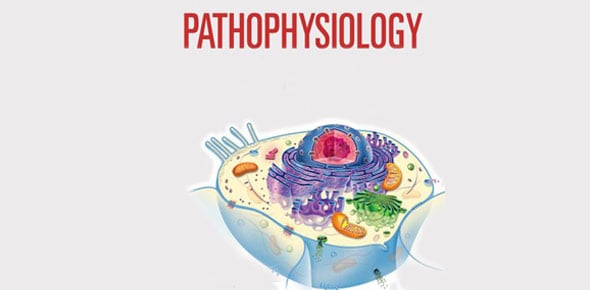Major risk factors for lung cancer include
The two MOST common causes of inflammation are
Hypertrophic cardiomyopathy is characterized by
You and your partner are caring for an 82 y/o man who is obviously...
The study of the functioning of an organism in the presence of disease...
Nonstriated muscle is also called_____muscle
If the cause of a disease is unknown, it is said to be
Groups of cells form
Lactated ringers is a/an _____ solution because its solute...
Ascites is defined as
The husband of a terminally ill woman called 911 because he thinks...
When oxygen does not reach the cell, the cell reverts to
If health care providers show up to work in shape
A loss of normal sympathetic nervous system tone causes
The desctruction of a blood clot is called
The MOST prevalent cation of the extracellular fluid is
Which of the following scenarios MOST accurately depicts abandonment.
Gross distortions of reality, withdrawal from social contacts, and...
_______nerves exit from between the spinal vertebrae and extend to...
Muscular dystrophy is characterized by
The chief white blood cell of the immune response is the
What type of tissue lines the intestines, blood vessels, and...
You have been attempting resuscitation of a middle-aged woman for...
One of the major differences between laws and ethics is that laws
A 39 y/o man with sever dehydration requires IV fluid therapy to treat...
Severe, prolonged stress
A diabetic patient who failed to take his or her insulin and presents...
What disease is characterized by erosions in the mucous membrane...
Allergies are acquired following.
What type of shock occurs when blood flow becomes blocked in the heart...
During the attempted resuscitation of a 79 y/o man in cardiac arrest,...
Which of the most following statesments regarding multiple organ...
Your unit is the first to arrive at the scene of a traffic accident....
Dehydration is generally a more serious concern in elderly patients...
Acute pulmonary edema
In the presence of infection, white blood cells release endogenous...
Distributive shock occurs when
You respond to a skilled nursing facility for a patient who is not...
A 17 y/o woman presents with acute abdominal pain while at a party...
Which of the following conditions would be the LEAST likely to cause...
When blood osmolarity increases
A person who ingest excessive amounts of salicylate ( i.e. aspirin)...
Ethics is MOST accurately defined as
Approximately 45% of a persons body weight is
Which of the following is an example of homeostatic failure?
While starting an IV on a patient complaining of abdominal pain, you...
An injection of immunoglobulin is an example of
The MOST major challenge to pH homeostasis is
In general, a child's immune system is not fully developed until he or...
The movement of water and a dissplved substance from an area of high...
















